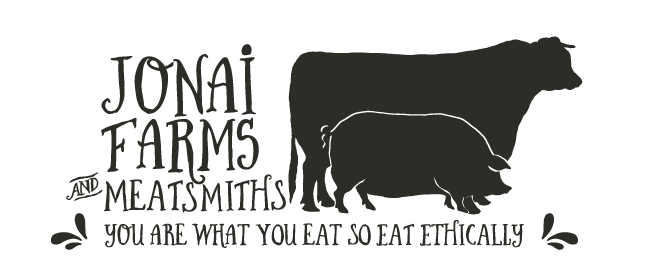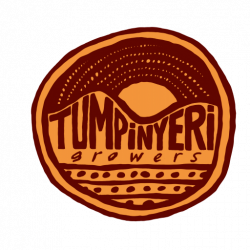WE WON! We can FINALLY start building an abattoir at Jonai Farms & Meatsmiths!
Winning the battle against the erosion of the Farming Zone
On Tuesday the 5th of March, we received the VCAT orders that uphold Council's decision to grant us a permit. The VCAT ruling affirms our position that abattoirs are intrinsic to livestock farming, and recognises that smallholders are losing access to the large abattoirs at an alarming rate.
Perhaps most importantly, a strong precedent has been set that small-scale abattoirs are an appropriate land use in the Farming Zone, and we Jonai are very hopeful of seeing many more flourish in the years to come!
In her orders, Senior Member Naylor wrote:
In light of the lack of any clear planning policy discouraging an abattoir in the Farming Zone; the ability for a permit to be granted for an abattoir; the small scale nature of this proposed abattoir (rural industry); and, for reasons that I will explain next, the lack of any material to indicate that this small scale rural industry will produce unacceptable amenity impacts, I am persuaded that it is appropriate to grant a permit for the proposed abattoir in the Beacon Paddock part of this site.
The objectors tried to claim that there is nothing inherently agricultural about an abattoir (seriously?!), and that we were trying to pull a swift one and turn our farm into an industrial use. Never mind that most of them are lifestylers on some of the highest quality agricultural land who have removed their land from farming, contributing to astronomical land prices that make it nearly impossible for young farmers to take up farming. In stark contrast, we made the decision over a year ago to open our farm to Tumpinyeri Growers in a rent-free landsharing arrangement so that they can earn a livelihood from market gardening. A great irony was that the lifestylers made this fruitless argument in the same week that I had a PhD article published entitled 'Building the intrinsic infrastructure of agroecology: collectivising to deal with the problem of the state'.
The senior member’s ruling states:
There is nothing in the agricultural or industrial land use policies that discourage an abattoir land use from being located in a Farming Zone. Mr O’Neill & others have submitted this is an industrial land use on farming land with no intrinsic link to agriculture. I am not persuaded of this submission in regard to this proposal. ‘Intrinsic’ is defined in the online Macquarie Dictionary as an adjective meaning ‘belonging to a thing by its very nature’. I agree with Mrs Jonas’ submission that it is inherent in farming that livestock is grown for consumption (amongst other purposes), so the slaughtering of livestock does belong by its very nature to the growing of livestock. Mrs Jonas points out farmers can legitimately slaughter their own livestock for their own consumption on their farms. An abattoir is then a place in which livestock can be slaughtered for a larger cohort of consumers. How large a scale this may be depends upon the characteristics of the particular abattoir. In this proposal, Mrs Jonas is referring to it as a micro abattoir.
484 days elapsed between lodging our development application and VCAT handing down its decision, during which time we witnessed another abattoir (Castle Estate) cease processing beef and lamb, affecting as many as 1000 smallholders according to the Weekly Times, and the red meat abattoir we use has reduced smallholder access yet again.
We could have built the abattoir in those 484 days and be up and running, ensuring the resilience and livelihood of our own and another dozen farms, if there was one simple amendment to the planning scheme to exempt very small abattoirs from requiring a planning permit. I detail the proposed reform below, but first, let us share our immediate plans after our success at VCAT and in consultation with Primesafe, Victoria’s meat industry regulator, who have been very helpful and supportive as we have progressed.
What’s next: a vehicle-based abattoir
Early this week a 40-foot refrigerated container will be delivered for Stuart to commence conversion to a vehicle-based abattoir, which will be a smaller facility than originally planned, but still sufficient for our and several others’ needs. An amendment to the Meat Industry Act in 2021 made vehicle-based abattoirs a legal option for slaughter for commercial sale of the meat, thanks to the lobbying efforts of Provenir, the first licensed mobile abattoir in Victoria. Although we finally won our battle for the planning permit for a fixed facility, which grants us land use permission, a vehicle-based option does not require one, and nor does it require a building permit. This makes the build much more streamlined and affordable than a fixed facility, and a container is something Stuart is skilled to convert himself with minimal need for contractors (the existing boning room and commercial kitchen are containers Stuart converted a decade ago, both of which are considered Rural Industry under the planning scheme and exempt from permit requirements in the Farming Zone).
The decision to shift to a vehicle-based abattoir was strongly influenced by the ever-increasing uncertainty of the security of our current slaughter options, and commences what will be a staged approach. We envision building the fixed facility within the two years we have to activate that planning permit. We are simply worried we are running out of time, and need a facility urgently. In fact, smallholders across Victoria and the rest of the country need these solutions urgently, and we hope ours will serve as a blueprint for others. Below I outline the simple reform that would enable others to build small facilities in the Farming Zone – intrinsic to the future of small-scale livestock farming.
We will, as always, share details of the plans and progress via social media – check out our new Instagram account @meatcollective_jonai if you want to follow along!
We will crank up the fundraising now that we have certainty, but are delighted at the lower cost of a container conversion, so only looking to raise up to $150k instead of over $400k – a much more readily achievable target. To date, we have raised $48,250 and spent $33,345. Unfortunately, some of that spend was wasted on consultants we could have avoided if we had not required a planning permit, with about $11k being useful for either option and $22k not so much. So realistically, we still need to raise around $140k, but will also continue to use monthly surplus from the business to fund it at the speed of our bank balance.
Jump onto the website to support the project and keep up with our progress.
The need for reform is urgent – micro-abattoirs are rural industry
A report by a parliamentary inquiry on animal welfare in the UK has outlined the challenges farmers face without access to local processing facilities and extensive benefits to small-scale farmers, animal welfare, and environmental outcomes from supporting the development of small-scale abattoirs. The issues and benefits are also highly applicable to the Australian context.
The Canadian province of British Columbia also introduced legislation in 2021 to ease the burden on small-scale livestock producers who slaughter small numbers of animals on farm for sale off farm. The legislation allows on-farm slaughter of small numbers of animals for direct sales locally, and custom slaughter of other farmers’ animals with a slightly higher level of scrutiny.
In Victoria, ‘rural industry’ is an acceptable use in the Farming Zone, and is what enabled us to run a boning room for the past decade without a planning permit. However, the scheme specifically excludes abattoirs and sawmills[1], requiring them to be permitted. The Australian Food Sovereignty Alliance has long proposed a very simple change to the legislation to enable on-farm micro-abattoirs with a low throughput of animals.
Recommendation
Amend the Victorian Planning Provisions to reduce regulatory burden on small-scale abattoirs in the Farming Zone commensurate with the low risk they pose to environment and amenity.
First, include a definition for ‘micro-abattoir’ in the Meat Industry Act, defined as an abattoir processing fewer than 1000 Livestock Units (LSU) per annum, and/or generating less than 200 tonnes of organic waste, processed and retained on farm according to EPA Guidelines.[2]
Second, include micro-abattoirs as a Section 1 use (no permit required) in the Farming Zone under Rural Industry, as distinct from large, industrial abattoirs, and in alignment with EPA Guidelines.
[1] AFSA also supports a concurrent change to enable small-scale sawmills, as the use of small, portable mills (e.g. Lucas mills) for sustainable agroforestry is already quite widespread, and should be allowed without a permit to support diverse business models, as is common on agroecology-oriented farms.
[2] EPA Victoria publication 1588.1 Designing, constructing and operating composting facilities. As the organic surplus yield has been generated and retained on site, a works approval and licensing are not required.








































